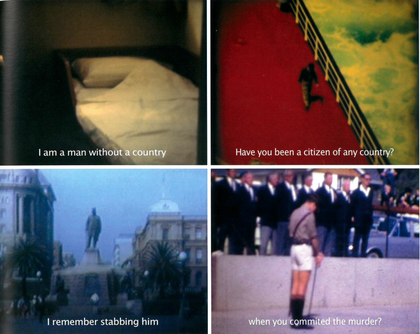Previously part of Media Networks
Obscure White Messenger 2010 combines found home-movie footage, sound and interview transcripts
Siopis’s film explores the political frustrations and mental distress that led Dimitrios Tsafendas to kill the South African prime minister.
In 1966, Tsafendas killed Hendrik Verwoerd, the so-called architect of apartheid, a policy of racial discrimination and segregation in South Africa. Tsafendas was born in Mozambique. His father was Greek and his mother, who worked in his father’s household, was Mozambican. When he moved to South Africa, he was classified ‘white’ under the apartheid system. He was shunned by white South Africans because of his dark skin and was limited in the relationships he could have with other people because of his classification as white.
This status, however, enabled Tsafendas to work as a parliamentary messenger, giving him access to the highest levels of the government. On 6 September 1966, he stabbed the prime minister during a parliamentary session. His motives were unclear. Leaders in the anti-apartheid movement, such as Nelson Mandela, quickly distanced themselves from him. The title of this work comes from Mandela’s description of Tsafendas as ‘that obscure white parliamentary messenger’.
At his trial, the judge declared Tsafendas not guilty of murder ‘by reason of insanity’. He had previously been diagnosed with schizophrenia. He was detained, first in prison and later in a psychiatric hospital, until his death in 1999.
Siopis says she aims ‘to shape stories about people caught up, often traumatically, in larger political and social upheavals.’ For her, these stories ‘speak to questions far beyond their specific historical origins’.
Tate Modern

